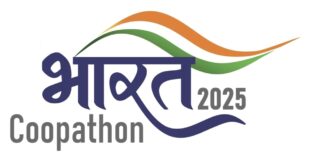 Dr.Seema Javed
Dr.Seema Javed
As climate commitments in India are accelerating, the energy transition must also be just – meaning that the shift away from fossil fuels should be inclusive, equitable, and supportive of workers and communities dependent on carbon-intensive sectors like coal, steel, cement, and automotive.
India is at a defining moment in its journey towards a low-carbon economy. As climate commitments are accelerating, the transition must also be just—meaning that the shift away from fossil fuels should be inclusive, equitable, and supportive of workers and communities dependent on carbon-intensive sectors like coal, steel, cement, and automotives. Ensuring a Just Transition (JT) is particularly important in coal-producing states like Jharkhand, Odisha, and Chhattisgarh, where the economy and livelihoods are deeply intertwined with fossil fuel-based industries.
A robust and inclusive financing ecosystem is essential to manage transition risks and unlock opportunities. India has made progress in sustainable finance. However, financing for the social dimensions of transition—such as worker reskilling, community resilience, and regional diversification—remains limited. This report explores how India can design a JT financing ecosystem that blends environmental ambition with socio-economic inclusion.
It is imperative for India to design a JT financing ecosystem that blends environmental ambition with socio-economic inclusion, according to a new report-Just Transition Financing Ecosystem: Stakeholder Consultation, by the Institute for Energy Economics and Financial Analysis (IEEFA).
The Just Transition (JT) financing ecosystem involves coordination across regulators, ministries, financial institutions, corporates, and civil society, each playing interlinked and critical roles.
According to the report-achieving this will require a coordinated, multistakeholder effort—bringing together regulators, financial institutions, ministries, corporates, and civil society—to align policies, capital flows, and implementation strategies. The report advocates a phased approach: short-term pilots and targeted incentives, medium-term regulatory scaling, and long-term structural reforms to embed JT principles across sectors and institutions.
The report highlights the role of SEBI and the RBI in aligning financial flows with sustainability goals. Similarly, it underscores the importance of policy institutions like the Ministry of Finance (MoF), the Ministry of Environment, Forest and Climate Change (MoEFCC), and NITI Aayog in shaping the strategic and fiscal frameworks for the transition. In addition, civil society and think tanks act as critical supporters by advancing inclusion and equity, the report states.

While sustainable finance in India is evolving, there is a significant gap in funding for social priorities such as worker reskilling, community resilience, and regional economic diversification.
Institutions like the Securities and Exchange Board of India (SEBI) and the Reserve Bank of India (RBI) can support JT by integrating JT metrics into disclosures, lending norms, and sustainable finance tools like Priority Sector Lending (PSL) and Sustainability Linked Loans.
“Capital can be mobilised through public and private sources, guided by ministries via blended finance and incentives. Corporates and their supply chains are key to implementation, especially in high-emission sectors,” says the report’s co-author, Gaurav Upadhyay, Energy Finance Specialist, IEEFA.Financial instruments like PSL, Green Deposits, and Sovereign Green Bonds can be modified to include JT-aligned eligibility and impact criteria.
“For instance, SEBI has initiated sustainability reporting through BRSR and ESG-linked products, but JT indicators are still missing. Expanding BRSR to include social risk and JT metrics could help channel capital toward companies with credible transition plans,” says Labanya Prakash Jena, co-author and sustainable finance consultant at IEEFA.
Sangeeth Raja Selvaraju, Policy Fellow (India and ASEAN) at the Grantham Research Institute at LSE and one of the authors of the report, expands on the role of the MoF. “The MoF can embed JT into India’s fiscal framework by aligning green taxonomies, allocating resources, and creating a dedicated fund for affected regions and communities,” he notes.
The MoEFCC can support JT by ensuring it is aligned with climate and environmental policies. It can leverage initiatives like the Green Skill Development Programme and Green Credit Programme, as well as tap into international funds, such as the Green Climate Fund, to advance workforce transitions, nature-based solutions, and community resilience in fossil fuel-dependent regions.
Corporates are gradually integrating JT considerations into business planning. However, they encounter challenges, such as high transition costs, limited access to finance for Micro, Small and Medium Enterprises, and supply chain constraints. They have expressed the need for clearer policy guidance, supportive regulation, and structured engagement with investors. There is a growing demand to embed social inclusion metrics in ESG frameworks and incentivise green innovation.
“The government must also look to boost state-level engagement, especially in coal-dependent regions, as many states lack the technical capacity to design, finance, or implement JT-aligned programmes,” says Jena.
“Ultimately, a successful JT will require sustained coordination between ministries, regulators, state governments, corporates, and civil society,” Upadhyay emphasises. Investing in capacity building, financial innovation, and inclusive planning will ensure that India’s energy transition not only mitigates climate risk but also empowers its people and regions for a more equitable future.
About IEEFA: The Institute for Energy Economics and Financial Analysis (IEEFA) examines issues related to energy markets, trends, and policies. The Institute’s mission is to accelerate the transition to a diverse, sustainable and profitable energy economy. (ieefa.org)
 Jubilee Post News & Views
Jubilee Post News & Views





